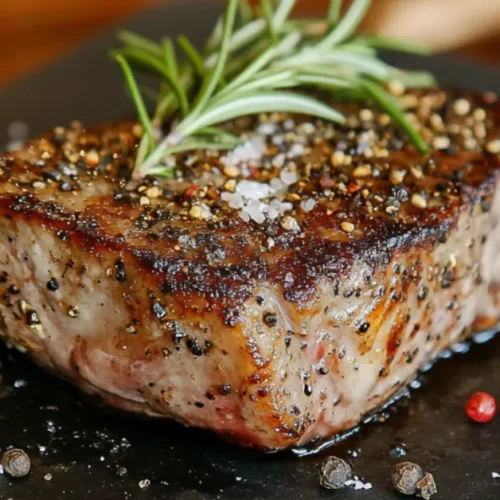
Tomahawk Steak: Everything You Need To Know About This Impressive Cut
A Tomahawk steak is a bone-in ribeye beef steak known for its long, Frenched bone that resembles a tomahawk axe. It is a thick, flavorful cut with marbled meat, offering a tender texture and rich taste when cooked.
Ingredients
- Salt Kosher or sea salt for seasoning
- Black Pepper Freshly ground for flavor
- Olive Oil or Butter For searing the steak
- Fresh Herbs Such as rosemary or thyme, optional for basting
- Garlic Optional, for added flavor when basting
Instructions
- Step 1: Prepare the Steak: Start by seasoning your steak with salt, pepper, and any desired herbs or spices. Let the steak come to room temperature before cooking, which helps it cook more evenly.
- Step 2: Slow Cook: Preheat your oven to a low temperature, typically around 250°F (120°C). Place the steak on a rack over a baking sheet to ensure even heat circulation around the meat. Cook the steak slowly, monitoring the internal temperature with a meat thermometer. This process usually takes anywhere from 30 minutes to an hour, depending on the thickness of the steak and your desired level of doneness.
- Step 3: Sear the Steak: Once the steak has reached your desired internal temperature (usually 5–10°F below the final target), remove it from the oven and let it rest briefly. Heat a cast iron skillet or grill over high heat, and then sear the steak for 1–2 minutes per side, until a rich, golden-brown crust forms. You can also add butter, garlic, and herbs to the pan during this phase to enhance flavor.
- Step 4: Rest and Serve: After searing, let the steak rest for a few minutes to allow the juices to redistribute. Then slice and serve.
Notes
When to Use the Reverse Sear Method The reverse sear method is especially effective for thicker cuts of steak, such as ribeye, strip steak, porterhouse, or T-bone, as it allows for even cooking without the risk of burning the exterior. This technique is also ideal for steaks that you want cooked to a precise level of doneness, as the slow cooking phase provides more control over the final result. It’s less effective for thinner steaks, where traditional searing methods are better suited.